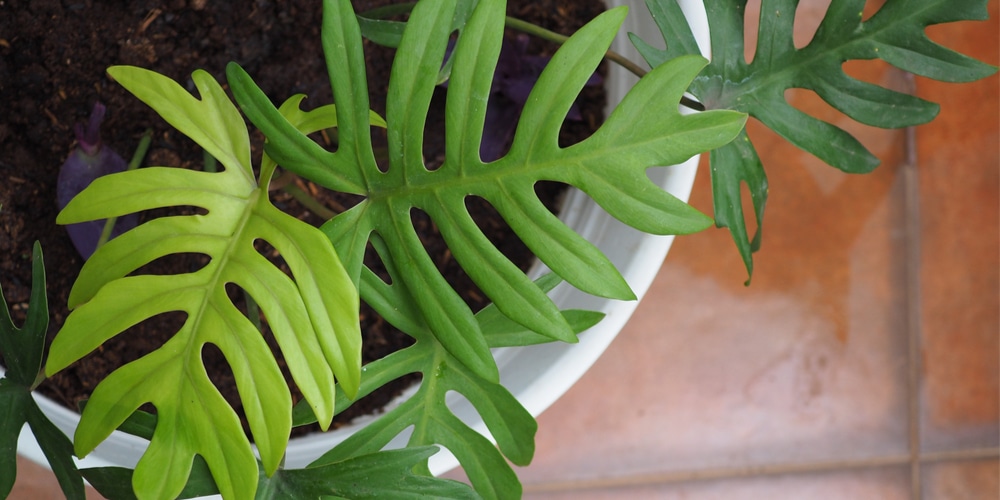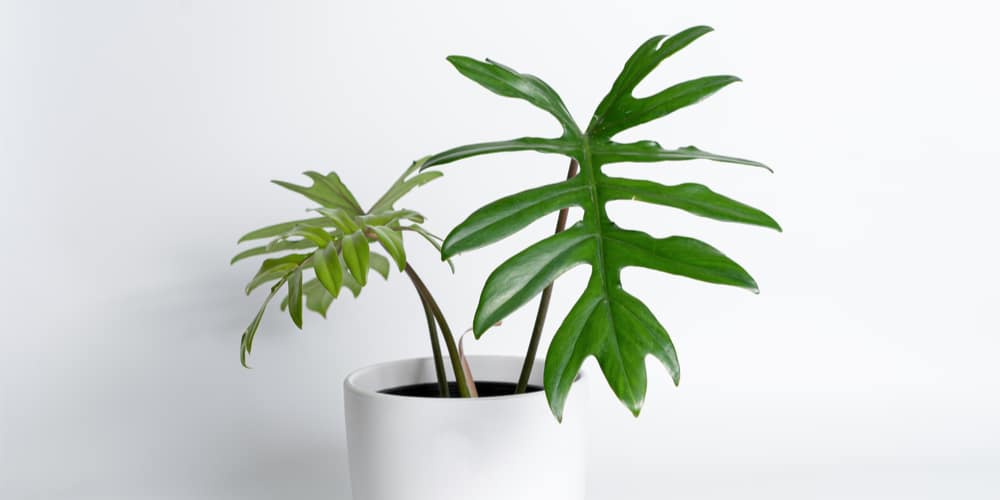Philodendron Mayoi is a philodendron variety that grows relatively tall in the right conditions. It produces long vines and, in the wild, is an epiphytic plant that climbs trees. When grown as a houseplant, you should add a moss support pole to the pot, allowing your philodendron to climb.
The philodendron Mayoy has dark green split leaves with dark purple or deep red vines. The vines are fast-growing and, when planted outdoors, can grow long enough to take over any space. These plants can be planted outside year-round in USDA zones 9 to 11. Let’s look at how to grow and care for a philodendron Mayoi plant.
What is a Philodendron Mayoi?
A Philodendron Mayoi is an epiphytic plant, which means it lives on other planets, and climbs up tree bark. It’s a tropical plant that originates from the rainforests of South American. This evergreen plant is part of the Araceae family which consists of over 400 plants.
Like all philodendron plants, the Mayoi is toxic to humans and animals if ingested. If consumed, the plant’s leaves and stem can cause vomiting and diarrhea, so it’s best to keep these plants out of the reach of young children and pets. It can also cause skin irritation, so wear gloves when handling or repotting your plant.
How to care for a Philodendron Mayoi?
Philodendron Mayoi is easy to care for. With a bit of care and attention, your plant will thrive.
Sunlight needs
Lighting is an essential aspect of plant growth; philodendron species need at least four hours of sunlight each day for healthy development. If it has weak light, the leaf color doesn’t develop properly, and leaves can turn yellow or drop off. It’s best to place your plant in bright, indirect sunlight. Avoid the full sun as philodendron leaves can become scorched.
Watering Requirements
Watering should be done 1 to 3 times a week, depending on the climate and the amount of sunlight the plant receives. A potted philodendron does not need to be watered every day as doing so will increase the risk of root rot.
Soil Type
The Philodendron Mayoi likes well-drained soil, so a mix of soil and peat moss works best for this type of plant. Use a pot with drain holes in the bottom to allow excess water to drain away, which will prevent root rot. Philodendrons like soil that’s slightly acidic and has a pH range of between 5.0 and 6.0.
Fertilization
Fertilizing the plant is also essential, especially if grown in indoor conditions. Provide ½ the standard fertilizer dosage for potted plants once a month if using a liquid fertilizer.
Alternatively, use slow-release fertilizer pellets, which can be placed around the roots of the philodendron when transplanting them into pots. The pellets should be pushed gently into the surface of the soil.
Temperature
Temperature is also vital for healthy growth and should be maintained around 60 to 82 degrees Fahrenheit. Temperatures below 55 degrees may damage stems and cause leaf loss, while temperatures above 85 degrees may burn the plant’s foliage. It’s also important for indoor plants to be placed away from heating vents or radiators.
Humidity
Philodendrons like high humidity, so they need to be placed near other tropical plants or in a room where the air is humid, such as a bathroom. If the area surrounding your philodendron has little moisture, you can use a humidifier to help or mist your plants daily. Alternatively, place a pebble tray with water underneath your plant. As the water evaporates, it will be beneficial to your plant’s foliage.
Pests and Disease
Philodendrons can sometimes suffer from sap-sucking pests like spider mites, aphids, and mealybugs. They can be treated with pesticides or soapy water.
Too much humidity encourages fungal problems such as leaf and root rot, so avoid overwatering or over misting your plant. Philodendrons are also vulnerable to stem blight which causes the stems to turn black and rot. Keep water off them when watering.
Conclusion
Philodendron Mayoi is easy to care for and perfect for beginners. Watering should be done between one and three times each week, especially if placed near windows that receive sunlight because the warmth speeds up evaporation. Fertilizing the plant is also important, especially if grown indoors.
Related:

